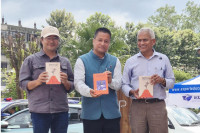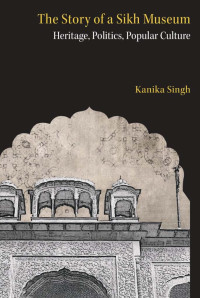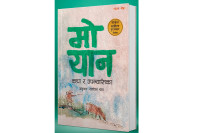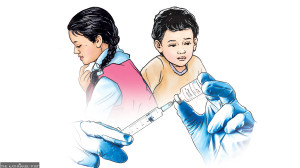Books
The high environmental costs of shampoo sachets
Sachets—as with so many other convenience-led products—had spiralled well beyond what its corporate parents had originally imagined.
Saabira Chaudhuri
The following is an excerpt from Saabira Chaudhuri’s Consumed: How Big Brands Got Us Hooked on Plastic published by Harper Collins.
In 2001, the Lucknow Times published an explosive article quoting a cow shelter owner who said 100 cows a day were dying from eating plastic bags in Lucknow alone. ‘The affected animal will have a skeletal body but abnormally bloated stomach. It will very eagerly wobble to the trough but would only sniff at the fodder, unable to eat anything,’ wrote the reporter. ‘They gradually become weak due to starvation and then finally become immobile.’
By now the sight of cows munching on dumped plastic was far from unusual. The early 1990s post-liberalisation boom in consumer goods had translated into a sea of plastic waste. Over a few years, India was deluged by bags, bottles, cutlery, cups, diapers, sanitary pads and, of course, sachets. India, like other parts of Asia, was also taking huge volumes of allegedly recyclable waste from the US and other developed countries. The plastic bottles that could be extracted for recycling were removed. Much of what remained was dumped or burned. Between 1990 and 1993, India imported 19 million kilograms of plastic waste, all of which the exporting countries smugly logged as having been ‘recycled’.
By now the vast majority of Unilever’s shampoo sales in India were made in sachets. The tiny plastic packages were widely littered. ‘This stuff, it began to show up in landfills and nature with our brands on it and that was ghastly,’ says Nihal Kaviratne, Unilever’s Indonesia chairman in the late 1990s and early 2000s. ‘We were embarrassed because it could be traced right back to us.’
The cows’ plight got people talking. For the first time, consumer goods executives began to worry about a broad crackdown on plastic waste that could include sachets. ‘Knowing the importance of the cow in Indian culture, we knew this could at some stage become a hot potato for us to handle,’ says M.K. Sharma, who worked as vice chairman and general counsel of Hindustan Lever at the time.
Sharma and Shiv Shivakumar, Hindustan Lever’s shampoo marketing head, flew to Singapore to meet regional Unilever executives to discuss ways to cut down on sachet waste. They considered incentivising consumers to bring empty sachets back to stores but quickly abandoned the idea given the mess and hassle shopkeepers would incur in keeping millions of old sticky sachets in their small stores. ‘The cost was not commensurate with the benefits we would derive,’ remembers Sharma. Plus, it was unlikely many consumers, even if incentivised, would bring sachets back. ‘People washed their hair in ponds, wells or running streams and for someone to bring back a 2-inch by 1-inch sachet was seen as a virtually impossible task,’ he says.
Years earlier, Unilever had tried to sell products unpackaged, asking shopkeepers to dole out small quantities of margarine and laundry detergent from larger barrels into shoppers’ reusable containers. The effort was short-lived. Kaviratne, who worked as Hindustan Lever’s marketing manager for personal care in the early 1970s, says eliminating the packaging commodified Unilever’s products and erased its most valuable assets: its brands.
Despite India’s poor waste collection infrastructure, recycling rates for items like plastic bottles and newspapers were high. Thanks to the country’s army of waste pickers, items that had any resale value were quickly snapped up. The shampoo sachets had none. They were too small and complex to recycle, so waste pickers ignored them.
Sharma suggested that Unilever, over time, move to paper sachets which, even if littered, would break down. But tests Unilever did on paper revealed major flaws. For one thing, paper didn’t hold up against India’s high temperatures and humidity. For another, the colourful, high-lustre sachets strung up at storefronts acted as advertisements for Unilever’s brands. By contrast, paper sachets were dull, hard to print on and 25 per cent more expensive.
By 2004, sachets accounted for 90 per cent of shampoo sales in rural India and 70 per cent of sales in cities. The tiny plastic packets had also metastasised well beyond shampoo, sparking what the industry’s executives proudly called a ‘sachet revolution’. Sachets were being used to sell deodorant, toothpaste, face cream, jam, pickle, perfume, ketchup, hair oil, hair dye, pain-relieving balm, hair removal cream, powdered drinks, butter, mosquito repellent, shaving lotion and digestive pills, among other products.
Sachets–as with so many other convenience-led products – had spiralled well beyond what its corporate parents had originally imagined. Just as plastic trash bags were once intended to be used mainly by Canadian hospitals, and disposable diapers were dreamed up for weekends away at grandma’s, the sachets were conceived of as a way to introduce low-income people to shampoo brands. The idea was that, as incomes climbed, consumers would naturally shift to using bottles. But similar to how trash bags were adopted by everyone and disposable diapers became everyday fixtures for children, the sachets were embraced by Indians of all income levels in both rural and urban areas.
Many Unilever executives I interviewed acknowledge the environmental costs of sachets but justify these by weighing them against the perceived social benefit–that sachets make brands affordable to poor people. The flip side, of course, is that poor people are the ones most impacted by the negative externalities of plastic. Studies show that plastic production and disposal facilities–including dumpsites–are invariably located near low-income communities. At the time, few were talking about microplastics, but we know now that littered sachets break down into tiny plastic particles that spread widely through ecosystems and end up in both animal and human bodies.
It’s also worth remembering that the demand Unilever and other consumer goods companies fulfil with their brands didn’t develop organically. It was meticulously created through millions of dollars ploughed into advertisements designed to convince Indians to abandon their age-old reliance on homemade concoctions using reetha (soap berries) and amla (gooseberries) and opt for packaged shampoo instead.
After years of failing to find a solution, Unilever pivoted to publicising its efforts to collect bottles, milk pouches and other ‘more viable’ plastic waste. On a 2019 reporting trip in which I spent time with waste pickers and walked the streets of Bangalore with Unilever’s India executives, I learned that the multilayer plastic Unilever was paying to have collected in order to meet regulatory requirements consisted mainly of larger packets for potato chips and biscuits rather than sachets. Much of what was collected was trucked long distances to be burned at cement kilns, a practice activists decry as dangerous and environmentally unsound.
Unilever has since told me that it is no longer ‘directly’ sending plastic waste to cement kilns. It says it complies with India’s regulations and that collected waste is managed in accordance with local guidelines. It didn’t address my questions about how sachets specifically are collected or what happens to these.
In 2021, nearly 41 billion shampoo packages were sold in India. Of these, 99 per cent were sachets.
Published in special arrangement with TheWire.in
______
Consumed
Author: Saabira Chaudhuri
Publisher: Harper Collins
Year: 2025




 23.12°C Kathmandu
23.12°C Kathmandu










